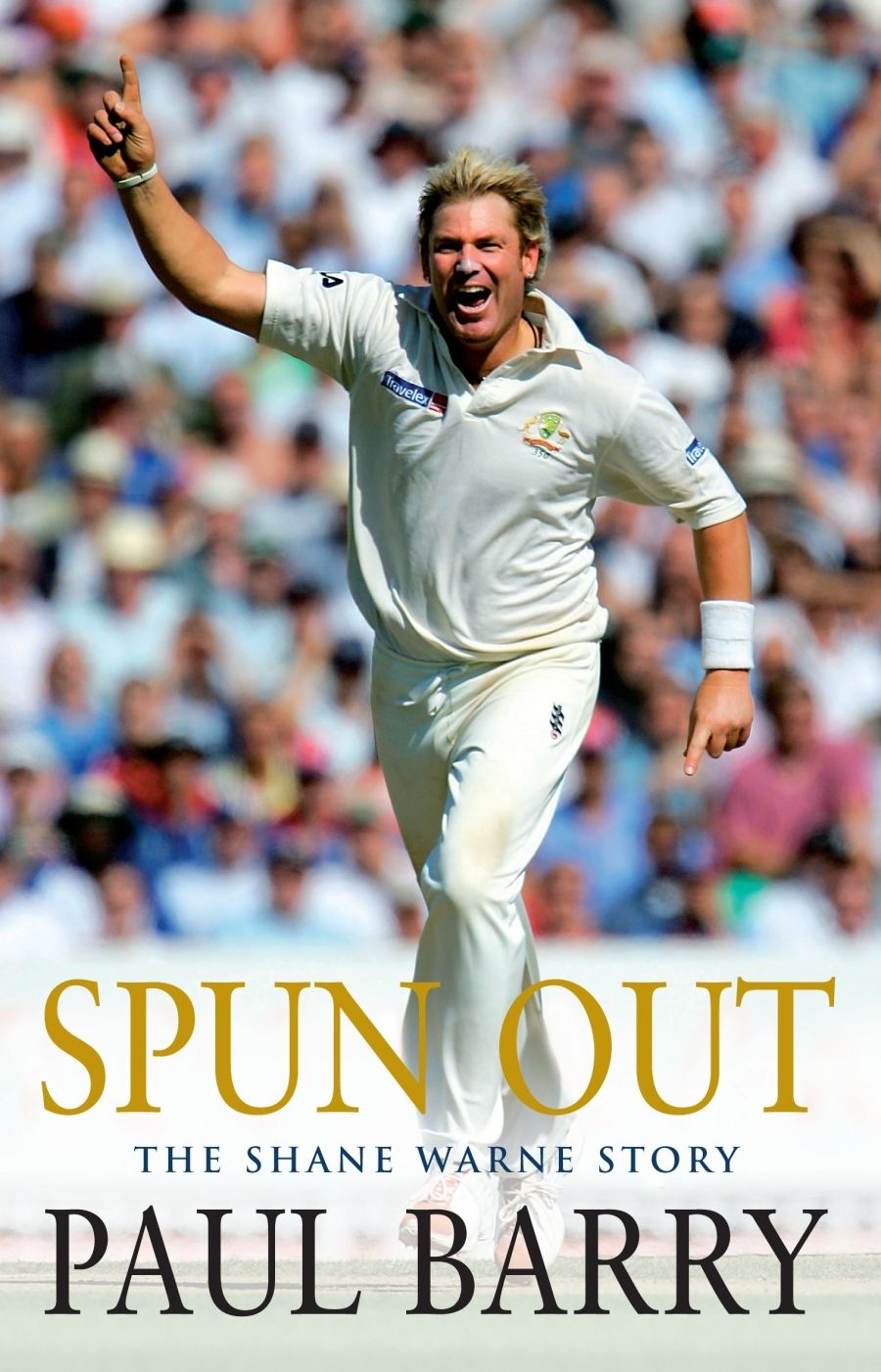
- Free Article: No
- Contents Category: Sport
- Review Article: Yes
- Online Only: No
- Custom Highlight Text:
Shane Warne is one of the greatest bowlers of all time, if not the greatest. Highly competitive and aggressive, he is one of the main factors in Australia’s prolonged dominance in world cricket. He has been involved in a series of controversies, on and off the field. He has been fined for sledging and over-aggressive appealing; and for providing, along with Mark Waugh, information to a bookie (something they both readily admitted, which the Australian Cricket Board tried to cover up). In 2003 he received a one-year ban for taking a banned substance, diuretic tablets, intended, he claimed (and this is not disputed by Barry), to help him lose weight. Off the field, like many leading sporting personalities, he is a serial womaniser
- Book 1 Title: Spun Out
- Book 1 Subtitle: The Shane Warne story
- Book 1 Biblio: Bantam, $49.95 hb, 552 pp
- Book 1 Readings Link: booktopia.kh4ffx.net/zE6yM
Paul Barry has a deserved reputation as an accomplished financial journalist. His knowledge and skills concerning the writing of sporting biographies, however, are sadly lacking. For example, Barry seeks a parallel to Warne, whom he describes as ‘A kid who won’t grow up. A genius locked in the body of a fool.’ He comes up with Mozart, as portrayed in the film Amadeus (1984). American baseball’s Babe Ruth is the closest parallel to Warne (Marshall Smelser, The Life That Ruth Built: A biography, 1975). They were both larger than life, ‘naturals’ with a low-work ethic, smokers, drinkers and philanderers, too unreliable for positions of responsibility.
Barry’s methodology is to trawl through newspaper and media sources, and to reproduce ‘useful’ quotes from his 100 interviewees. He is more concerned with presenting information than with analysing it in any systematic way. To produce a useful sporting biography, an author needs to have a feel for the occupation that is professional sport. This is beyond Barry. His reference material reveals little general reading on sport, a recent growth area, both in Australia and overseas.
Barry says Warne ‘is a walking paradox. He is supremely confident, yet profoundly insecure. He is brilliant but also a buffoon. He is generous and thoughtful, but utterly self-obsessed. This book is the search for why.’ It is not, in two senses. While Barry provides information on the trials and tribulations of Warne’s career – with the important omission of his involvement with the Australian Cricketers’ Association and the threatened strike in November 1997, which forced the ACB to negotiate a comprehensive collective bargaining deal, which in turn provided ‘decent’ incomes for state as well as test players – he is obsessed, if not spun out, with Warne’s numerous sexual exploits and his unfaithfulness to, and eventual divorce from, his wife, Simone. Barry provides more details of maidens Warne has bowled over (and those wanting to be bowled over) than accounts of wickets he has taken.
Second, after almost 400 pages, Barry becomes bored with Warne’s exploits. Slightly more than the last quarter of Spun Out is devoted to an account of England’s 2005 Ashes victory over Australia. Barry was un-able to resist the temptation to celebrate the success of the land of his birth. In the process, Warne slips from the foreground to the background of the narrative.
Barry has little time for Warne, which is his right and privilege. More interesting, however, is Barry’s attitude to Warne during his schooldays and the period before he established his career. Barry draws attention to Warne’s apprehension about whether or not he had what it takes to become a top-flight cricketer. In Barry’s hands, this is a sign of weakness, a major character flaw. He has no understanding of the insecurities of youth, let alone of the cut-throat world of professional sport.
Barry is highly critical of other aspects of young Warne’s personality; his poor diet and appetite, smoking, drinking, weight, peroxide and tinted hair, earring, desire to be liked, aversion to training and practice, lack of interest in things other than himself and sport, and his early liaisons with women. Because Barry is so dismissive of Warne in the here and now, he ‘reads’ Warne’s past in negative and dismissive terms.
Spun Out is a considerable disappointment. Paul Barry is out of his depth and should return to his forte, financial reporting. Despite his numerous faults, Shane Warne deserves a more thoroughly researched and considered biography than this.


Comments powered by CComment